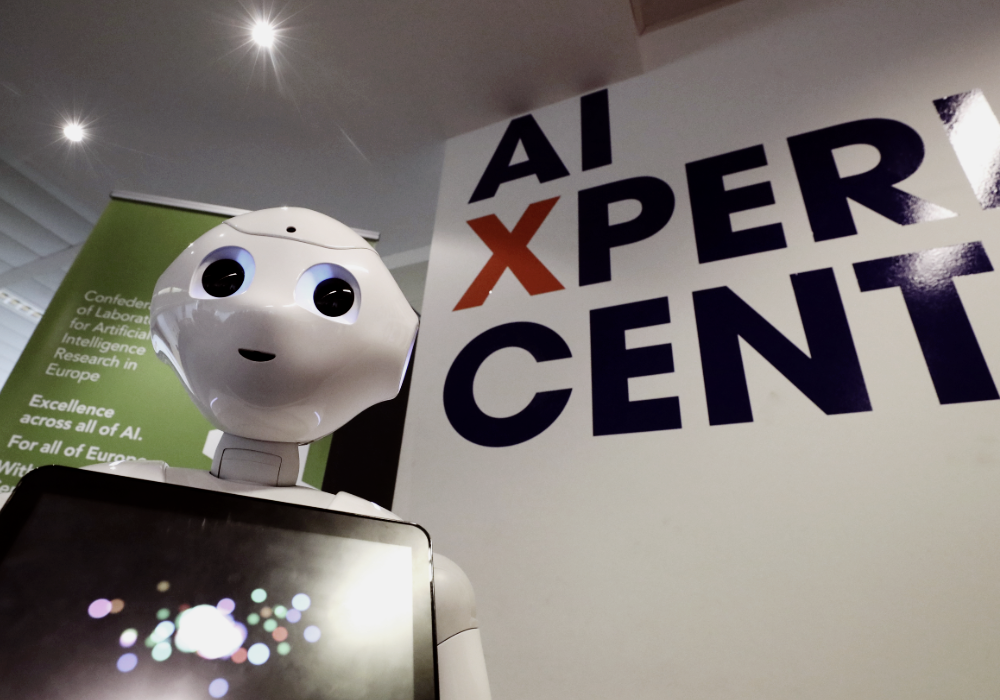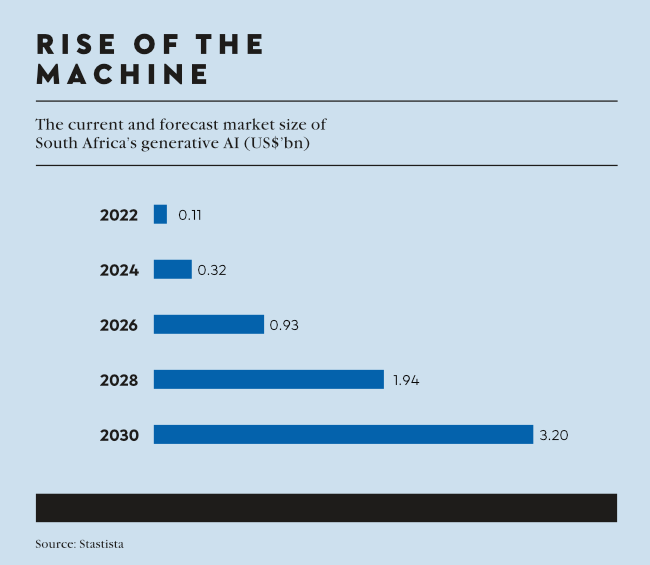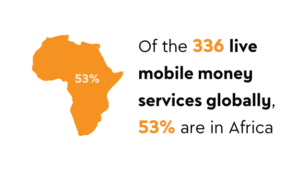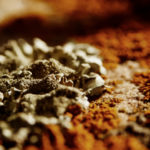A baobab tree can live for 1 000 years. Of the world’s eight baobab species, six are found in Madagascar. However, the once magnificent forests where they naturally occurred have been decimated by slash-and-burn farming practices. Researchers say about 4 000 ha of the island’s baobab forests are being destroyed a year.
Scientists are now engaged in a project with local women to plant baobab seedlings. Ecologist Seheno Andriantsaralaza, founder of the Assessment-Research-Outreach Baobab project, told the Conversation how the use of AI is assisting in the organisation’s work.
‘We set up two nurseries made of low wooden greenhouses in partnership with communities. Together we transplanted more than 50 000 baobab and other seedlings in February 2023. Our data showed a seedling survival rate of 70% after replanting, which is incredibly high considering the dryness in forests.
‘We were able to partner with EOS Data Analytics, a company that specialises in using artificial intelligence to monitor the health of forests. They used satellite footage, algorithms and remote sensing to see how the seedlings were doing.
‘Comparing the same area with footage from 2020 revealed that since February 2023, plant and tree health has been significantly higher than in previous years. The positive effects of seedling transplantation appeared within months.’
Just across the ocean from Madagascar lies the industrial heartland of South Africa – the city of Johannesburg. Over recent years, serious questions have been asked over the quality of the air over the city and surrounding areas. Now, with the aid of AI, scientists are better prepared to gather research about the Highveld’s air quality and the health risks it poses.
Bruce Mellado, a professor of physics at the University of the Witwatersrand, is one of the people behind the South African Consortium of Air Quality Monitoring. ‘We decided to create, for the first time in South Africa, a cost-effective air-quality monitoring system based on sensors, internet of things and artificial intelligence. We have named this system Ai_r,’ he writes in an essay on the Conversation.

‘Ai_r is made up of a collection of small boxes that cost about US$100 to make. The boxes can be mounted on a window sill of any building, where they take air samples and feed this data back to a cloud in real time. Modelling and forecasts are made with artificial intelligence coupled to the cloud. Our vision is to place tens of thousands of these devices all over South Africa.
‘In air-quality monitoring, artificial intelligence will learn from the vast wealth of data that these sensors will produce and then make predictions. For example, Ai_r will be able to tell us the impact of weather changes on air quality so that we know which areas will have more polluted air.
‘We really need to measure pollution and find out just how bad it is so that mitigating strategies can be designed that target problem areas very efficiently. The goal is to improve air quality for people who are most affected by air pollution.’
The device uses a small laser that shoots light onto air, says Mellado. ‘Depending on how that light scatters and reflects, you can measure the concentration of particulates. Then the measurements are sent to the tiny computer inside the box, which communicates through an antenna every five minutes, through internet of things technologies, to a cloud-based system where the data is stored. So nobody has to be there collecting air-quality samples anymore.
‘Without artificial intelligence, it would be very difficult to come up with a cost-effective system that could monitor air quality and give us predictions.’
These examples are just two of the many applications where AI is having a beneficial effect on work carried out by Africa’s scientific community. Through AI, scientists are developing tools to predict, manage and mitigate the impacts of climate change, environmental degradation and enhance better agricultural practices.
One of the primary applications of AI in combating extreme weather in Africa is in enhancing weather prediction and early warning systems. Due to limited access to conventional weather infrastructure, many African nations struggle to provide accurate, localised and timely weather forecasts. AI can bridge this gap by using data from satellites, climate sensors and historical weather records to improve the accuracy and scope of weather predictions.
Machine learning (ML) algorithms, a subset of AI, can analyse vast amounts of weather data to identify patterns and correlations that would be difficult to detect manually. For example, AI-driven models can incorporate complex data sets to generate predictions about rainfall patterns, temperature changes and potential extreme weather events, such as droughts and cyclones.
An effective example is the application of AI models in drought prediction. Droughts have significant adverse effects on African agriculture, livelihoods and food security. AI models can process multiple sources of data – such as satellite imagery, precipitation records and soil moisture content to predict drought conditions months in advance. By using these models, African governments and communities can receive early warnings, enabling them to take proactive measures, such as conserving water resources, distributing drought-resistant seeds and preparing emergency food supplies. This form of predictive capability enhances resilience and ensures communities can better withstand the impacts of extreme weather.
One of the areas particularly vulnerable to climate change is the Horn of Africa.
The physics department of the University of Oxford has teamed up with the UN World Food programme to develop a weather-forecasting system driven by AI that is being tested in the region.
‘It’s a hybrid approach where we have artificial intelligence to then fill in the gaps where the physical models lack understanding or representation because it’s too complex,’ according to Oxford University climate scientist Shruti Nath, as quoted in an Africanews report. ‘They’re then able to represent these complicated processes in a data-driven method so that we can best be able to forecast what the true observed reality is.’
She says the AI identifies upcoming extreme weather by analysing satellite data of clouds and the temperatures at the tops of them. ‘So, for the AI, there is the part where it predicts. But to predict, it needs to first train. And we train on historic observational data. So the input towards our AI device is the weather forecasts,’ she says.
‘As the training time progresses, the model will learn more and more, and it’s rewarded for giving accurate predictions that match true observed reality. And if it doesn’t do that, it’s penalised. Once it’s trained, you can just run it on your laptop to produce 50 predictions of all the possibilities of what the future weather is going to look like.’
The programme is being piloted in Kenya and Ethiopia, and there are plans to roll it out across the area.
Agriculture is a cornerstone of Africa’s economy, employing more than 50% of the continent’s workforce and contributing significantly to GDP. However, African agriculture is heavily dependent on rain-fed systems, which are highly susceptible to extreme weather variability. AI offers transformative potential for the sector by enabling precision agriculture, a farming management concept that uses technology to monitor and optimise the farming process for better yield and sustainability.
AI-driven precision agriculture uses data from drones, sensors and satellites to monitor soil health, crop growth and pest outbreaks in real-time.

For example, sensors can detect soil moisture levels, nutrient deficiencies and plant health. By analysing this data, AI algorithms can provide tailored recommendations for fertiliser application, irrigation schedules and pest control. This not only maximises crop yields but also reduces input costs and environmental impacts.
In West Africa, AI is predicting agricultural yields of key crops using satellite remote sensing and machine learning to crunch the data. According to researchers from AKADEMIYA2063, the Africa Agriculture Watch (AAgWa) tool will aid the production of maize, cassava and sorghum. The crops were selected because they form the basis of many staple diets.
‘Relying on conventional analytic techniques alone will not deliver the effective decision-making we need to meet these challenges,’ Racine Ly, director for data management, digital products and technology at AKADEMIYA2063, told SciDev.Net. The tool took about two years to develop by an all-African team, according to Ly.
‘Since this is data that researchers and decision-makers most importantly will use to make decisions, we needed to make sure that the data is correct and the predictions are accurate,’ he says.
‘Initially we intend to work with co-operatives that can aggregate the information and then disseminate it. But at the same time, we are trying to see how we can work with extension workers to really pass on the information to the farmers.’
From improving weather forecasting and precision agriculture to combating pests and modelling climate change impacts, AI empowers African scientists and farmers with the tools needed to confront complex environmental issues.
However, realising the full potential of AI will require continued investment in infrastructure, education and accessibility. By embracing AI-driven innovations, African nations can build more resilient, productive and sustainable societies that are better equipped to face the environmental challenges of the 21st century.
Images: Freepik, Reuters Pictures, iStock



















